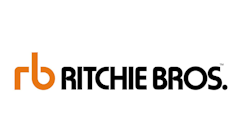When I first read about P3s, I immediately and mistakenly thought of PS3s. PlayStation 3, the video game console with which my son played endless hours of Mario Kart. As you know, P3s are public-private partnerships. It’s a growing trend in financing transportation infrastructure projects while the construction industry and the nation at large, waits for the US Congress to come up with a long-term fix for the Highway Trust Fund.
In your typical P3 arrangement, a private contractor using its own resources will design and develop a project for the local, state, or federal government. When the project starts to generate revenue, the private contractor and the government will split the profits. When it comes to transportation projects, those deals would involve roads or bridges that could generate dollars in the form of tolls or taxes.
When I first read about P3s, I immediately and mistakenly thought of PS3s. PlayStation 3, the video game console with which my son played endless hours of Mario Kart. As you know, P3s are public-private partnerships. It’s a growing trend in financing transportation infrastructure projects while the construction industry and the nation at large, waits for the US Congress to come up with a long-term fix for the Highway Trust Fund. In your typical P3 arrangement, a private contractor using its own resources will design and develop a project for the local, state, or federal government. When the project starts to generate revenue, the private contractor and the government will split the profits. When it comes to transportation projects, those deals would involve roads or bridges that could generate dollars in the form of tolls or taxes. [text_ad] Just a couple of weeks ago, the American Road and Transportation Builders Association held its annual conference in Washington DC to discuss the role of public-private partnerships in financing transportation infrastructure projects. More than two dozen federal and state transportation officials attended, along with a panel of house transportation committee chairs from four states who each had unique views on P3 policy. The Association’s website reports: “In addition to the leading top-level speakers, the P3 conference featured more than 50 other transportation proponents in 15 interactive sessions. Key topics included: the long-term future of P3s in transportation, unsolicited proposals, current and prospective federal financing tools, emerging P3 markets, the views of ratings agencies, and details on P3 mega-projects in the operations and maintenance stage. Presenters included private sector professionals in construction, design, finance, law and academia. ARTBA’s P3 Owners Council, a peer group exclusive to public agency representatives, met for the second year.” Both the public sector and private sector can benefit from P3s. A city or agency can spread out the cost of a project throughout the life of a road or bridge instead of having to pay entirely for the project once it’s been completed instead of the government paying for it all at once. The risks can also be shared. It can save government money while being able to employ private sector expertise and management skill. Contractors can secure more work for themselves and in turn be able to create jobs and income. The website Construction Dive quoted Mike Puelle: "We're learning across the country at the state and local level that in order to get more infrastructure built, there needs to be different ways to finance and operate projects," Mike Puelle, CEO of Associated General Contractors of New Mexico, told Albuquerque Business First.Puelle said each public-private partnership is structured differently and may require more transparency, flexibility and competition than an all-private deal.” The Federal Highway Administration wants to see more use of P3s: “FHWA encourages the consideration of public-private partnerships (P3s) in the development of transportation improvements. Early involvement of the private sector can bring creativity, efficiency, and capital to address complex transportation problems facing State and local governments. The Office of IPD provides information and expertise in the use of different P3 approaches, and assistance in using tools including the SEP-15 program, private activity bonds (PABs), and the TIFIA Federal credit program to facilitate P3 projects.” P3s may not be the best route for all contractors, but it is one way for contractors to secure an infrastructure project without having to wait for a long-term fix for the Highway Trust Fund. To learn more about P3s and the different programs that are offered, see http://www.fhwa.dot.gov/ipd/p3/default.aspx.Just a couple of weeks ago, the American Road and Transportation Builders Association held its annual conference in Washington DC to discuss the role of public-private partnerships in financing transportation infrastructure projects. More than two dozen federal and state transportation officials attended, along with a panel of house transportation committee chairs from four states who each had unique views on P3 policy.
The Association’s website reports:
“In addition to the leading top-level speakers, the P3 conference featured more than 50 other transportation proponents in 15 interactive sessions. Key topics included: the long-term future of P3s in transportation, unsolicited proposals, current and prospective federal financing tools, emerging P3 markets, the views of ratings agencies, and details on P3 mega-projects in the operations and maintenance stage. Presenters included private sector professionals in construction, design, finance, law and academia. ARTBA’s P3 Owners Council, a peer group exclusive to public agency representatives, met for the second year.”
Both the public sector and private sector can benefit from P3s. A city or agency can spread out the cost of a project throughout the life of a road or bridge instead of having to pay entirely for the project once it’s been completed instead of the government paying for it all at once. The risks can also be shared. It can save government money while being able to employ private sector expertise and management skill.
Contractors can secure more work for themselves and in turn be able to create jobs and income.
The website Construction Dive quoted Mike Puelle:
“We’re learning across the country at the state and local level that in order to get more infrastructure built, there needs to be different ways to finance and operate projects,” Mike Puelle, CEO of Associated General Contractors of New Mexico, told Albuquerque Business First.
Puelle said each public-private partnership is structured differently and may require more transparency, flexibility and competition than an all-private deal.”
The Federal Highway Administration wants to see more use of P3s:
“FHWA encourages the consideration of public-private partnerships (P3s) in the development of transportation improvements. Early involvement of the private sector can bring creativity, efficiency, and capital to address complex transportation problems facing State and local governments. The Office of IPD provides information and expertise in the use of different P3 approaches, and assistance in using tools including the SEP-15 program, private activity bonds (PABs), and the TIFIA Federal credit program to facilitate P3 projects.”
P3s may not be the best route for all contractors, but it is one way for contractors to secure an infrastructure project without having to wait for a long-term fix for the Highway Trust Fund.
To learn more about P3s and the different programs that are offered, see http://www.fhwa.dot.gov/ipd/p3/default.aspx.








